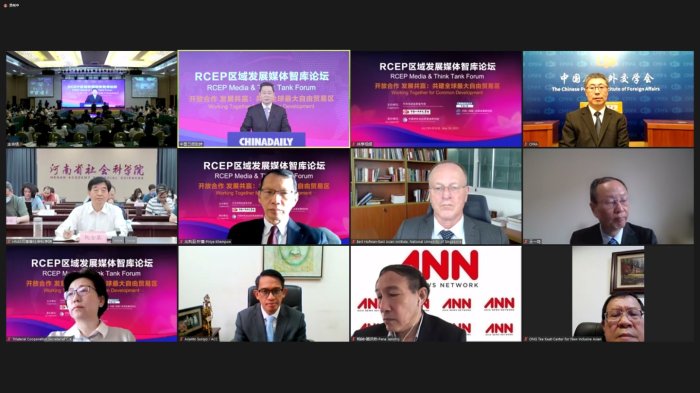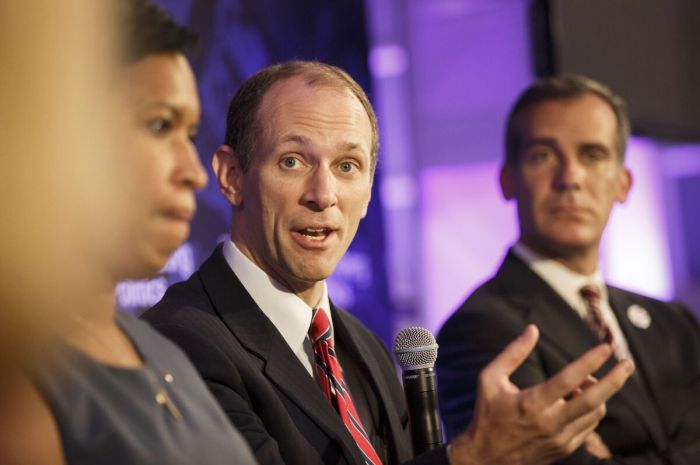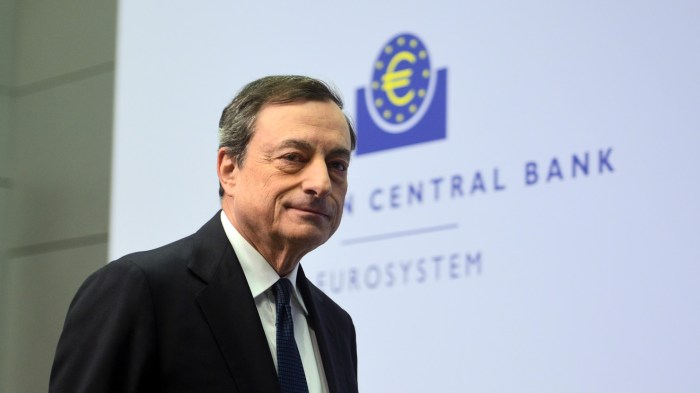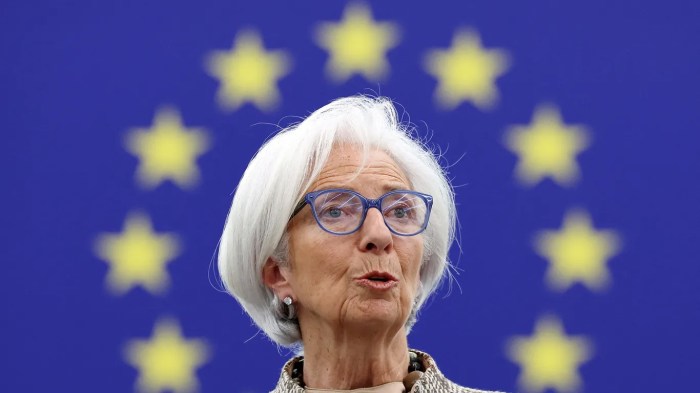
Brazil central bank chief says tightening cycle still open. This statement signals a continuation of the current monetary policy, hinting at a sustained effort to combat inflation. The decision, made against the backdrop of a complex global economic environment and Brazil’s own economic challenges, could significantly impact investor sentiment and market reactions. Will the central bank’s actions result in higher borrowing costs, and how might that affect consumer spending?
We delve into the details to understand the implications of this crucial announcement.
This announcement from the Brazilian central bank regarding their ongoing tightening cycle is a significant development. The bank’s statement likely reflects ongoing concerns about inflation levels, and their strategy for managing the economy. The historical context of Brazil’s monetary policy, the current state of the Brazilian economy, and the global economic climate all play critical roles in understanding this decision.
The potential impacts on investors, market sentiment, and the Brazilian real are crucial factors to consider. This analysis will explore the reasoning behind the ongoing tightening, potential trade-offs, and the likely future trajectory of the Brazilian economy.
Contextual Background

Brazil’s monetary policy has a history marked by periods of inflation and attempts to stabilize the economy. Historically, the central bank has struggled with high inflation, often requiring aggressive interest rate hikes to curb price increases. These efforts have sometimes resulted in slower economic growth, creating a delicate balancing act between price stability and economic activity.The current economic climate in Brazil presents a complex picture.
Inflation remains a significant concern, although recent data suggests a potential moderation. GDP growth has been inconsistent, fluctuating depending on various factors such as global demand and domestic policy decisions. Unemployment rates are a key concern, with significant portions of the population facing economic hardship. These interconnected challenges highlight the intricate relationship between inflation, economic growth, and employment in the Brazilian context.
Historical Overview of Brazilian Monetary Policy
Brazil’s central bank, the Banco Central do Brasil (BCB), has a mandate to maintain price stability and support economic growth. Over the years, the BCB has employed various strategies, including adjusting interest rates, managing the exchange rate, and implementing fiscal policies. The effectiveness of these strategies has varied, depending on the prevailing economic conditions and political landscape. Significant historical episodes, such as the hyperinflationary period of the 1980s and 1990s, have shaped the current approach to monetary policy.
These experiences have informed the BCB’s current strategies to address inflation and promote sustainable economic growth.
Current Economic Climate in Brazil
The current economic climate in Brazil is characterized by persistent inflation pressures, which require careful management by the central bank. GDP growth has been uneven, fluctuating in response to global economic conditions and domestic factors. Unemployment rates remain a significant challenge, requiring strategies to stimulate job creation and improve economic opportunities for the population. The interplay of these factors creates a dynamic environment that necessitates continuous monitoring and adaptation by the central bank.
Role and Responsibilities of the Central Bank in Brazil
The Banco Central do Brasil (BCB) is responsible for maintaining price stability in Brazil. This involves controlling inflation through monetary policy tools such as interest rate adjustments. The BCB also plays a role in promoting economic growth by ensuring financial stability and fostering confidence in the Brazilian economy. Furthermore, the BCB works to maintain a stable exchange rate, which influences trade and investment flows.
Recent Policy Decisions by the Central Bank
Recent policy decisions by the BCB have focused on managing inflation while mitigating potential negative effects on economic growth. These decisions, often involving adjustments to the benchmark interest rate (Selic), are aimed at balancing these competing objectives. The BCB carefully considers global economic trends and domestic economic indicators to guide its policy actions. This intricate balancing act reflects the central bank’s commitment to achieving its dual mandate of price stability and economic growth.
Brazil’s central bank chief’s comments on the ongoing tightening cycle are interesting, but perhaps the Dubai stock index’s recent gains offer a more upbeat perspective. Dubai’s stock index rising for a second day suggests a potential shift in investor sentiment, though it’s still early to say how this might impact the broader global market. Ultimately, the Brazilian central bank’s stance on tightening remains a key factor to watch.
Comparison of Current Tightening Cycle to Previous Cycles
The current tightening cycle in Brazil, while sharing some similarities with previous cycles, also exhibits unique characteristics. Factors like global economic conditions, inflation trends, and domestic economic vulnerabilities shape the specifics of each cycle. Comparing the current cycle to previous ones helps policymakers understand potential outcomes and adjust strategies accordingly. A crucial aspect of this comparison is the consideration of the global economic context, which significantly influences Brazil’s monetary policy decisions.
Global Economic Context Impacting Monetary Policy
The global economic environment significantly influences Brazil’s monetary policy decisions. Factors such as global inflation rates, interest rate hikes by major central banks, and commodity prices impact Brazil’s exchange rate and inflation. Understanding these international trends is essential for the BCB to tailor its policy responses to the prevailing global context. International events can trigger significant changes in the Brazilian economy, making global economic conditions a critical element of the central bank’s decision-making process.
Implications of the Statement
The Brazilian Central Bank’s recent announcement that the tightening cycle remains open carries significant implications for the country’s economy. Investors, businesses, and consumers will all need to adjust their expectations and strategies based on this continued monetary policy stance. The statement signals a commitment to managing inflation, which, while potentially positive in the long run, may present short-term challenges.
Impact on Investor Sentiment
The statement’s impact on investor sentiment is likely to be mixed. Investors who prioritize a stable inflation environment will likely view the statement positively. However, those focused on immediate economic growth may interpret the ongoing tightening as a headwind, potentially leading to a decrease in investment activity. The current uncertainty surrounding global economic conditions further complicates investor assessments.
Market Reactions
Potential market reactions include fluctuations in the Brazilian real and stock market. A sustained tightening cycle could lead to a strengthening of the US dollar relative to the Brazilian real, which in turn could pressure the Brazilian real’s exchange rate. Stock market reactions will likely depend on the specific sector and company performance, with some sectors potentially suffering more than others from the rising borrowing costs.
Historically, such statements have triggered both positive and negative reactions depending on the broader context.
Effect on Borrowing Costs and Lending Rates
The continued tightening cycle is almost certainly going to lead to higher borrowing costs for businesses and consumers. Lending rates are expected to increase as the central bank maintains its firm stance. This increase will affect various sectors, from mortgages to business loans, potentially impacting investment and consumer spending. Higher borrowing costs can slow economic growth, as seen in past instances of similar monetary policies.
Influence on Consumer Spending and Investment Decisions
The increased borrowing costs are likely to curb consumer spending and investment decisions. Consumers may postpone large purchases, and businesses might delay capital investments due to the higher financing costs. This could lead to a slowdown in economic activity in the short term, though the impact may vary depending on the overall economic outlook and the resilience of the consumer sector.
Past tightening cycles have shown a similar pattern of initial consumer spending and investment downturns.
Comparison with Previous Statements
Comparing the current statement with past pronouncements from the central bank will provide insights into the consistency and trajectory of monetary policy. Past statements often provided specific targets for inflation and growth. Analyzing these historical statements can offer valuable context for understanding the potential impact of the current statement on the economy. The central bank’s communication strategy and the economic backdrop during these periods also play a crucial role in interpreting the implications.
Potential Effects on the Brazilian Real
The continued tightening cycle will likely exert downward pressure on the Brazilian real. This is because a higher interest rate differential between Brazil and other major economies can attract foreign investment into higher-yielding assets in other countries, potentially increasing the demand for those currencies and causing a weakening of the Brazilian real. Previous episodes of tightening monetary policy in Brazil have often resulted in a depreciation of the currency.
The magnitude of the effect will depend on various factors, including global market conditions.
Analysis of the Central Bank’s Strategy
The Brazilian Central Bank’s recent pronouncements regarding the ongoing tightening cycle underscore a commitment to combating inflation. This decision, while potentially impactful on the economy, warrants a careful examination of the central bank’s strategy, tools, and potential trade-offs. Understanding the rationale behind these actions, and potential risks, is crucial for assessing their likely effectiveness.The central bank’s stated intention to maintain a tight grip on inflation, despite potential economic headwinds, reflects a clear priority.
This approach, however, necessitates a nuanced understanding of the economic landscape and the potential for unintended consequences.
Current Monetary Policy Tools, Brazil central bank chief says tightening cycle still open
The central bank employs a variety of tools to manage monetary policy. These tools are crucial in influencing interest rates, credit availability, and ultimately, inflation.
| Tool | Description | Mechanism of Impact |
|---|---|---|
| Policy Interest Rates (e.g., Selic rate) | The benchmark interest rate for the economy. | Higher rates increase borrowing costs, discouraging spending and investment, thereby reducing demand-pull inflation. |
| Reserve Requirements | The percentage of deposits banks must hold in reserve. | Higher reserve requirements reduce the amount of money banks can lend, further tightening credit conditions and slowing economic activity. |
| Open Market Operations | Buying or selling government securities to influence the money supply. | Buying securities injects liquidity into the market, potentially lowering interest rates. Selling securities has the opposite effect. |
| Inflation Targeting | A policy framework that focuses on achieving a predetermined inflation rate. | The central bank adjusts its policy instruments to keep inflation within the target range. |
Comparison with Other Central Banks
A comparison of the Brazilian Central Bank’s actions with those of other central banks facing similar economic situations reveals important insights. The effectiveness of a particular tightening strategy is often context-dependent, influenced by specific economic factors and prevailing global conditions.
| Central Bank | Economic Situation | Actions Taken | Outcome |
|---|---|---|---|
| Brazil | High inflation, moderate growth | Raising policy rates | To be determined. |
| US Federal Reserve | High inflation, strong growth | Raising policy rates, reducing balance sheet | Inflation has fallen, but growth has also slowed. |
| European Central Bank | High inflation, slower growth | Raising policy rates | Inflation is coming down but concerns remain about energy prices and the war in Ukraine. |
Rationale for the Tightening Cycle
The central bank’s rationale for the ongoing tightening cycle is primarily rooted in the need to curb inflation. High inflation erodes purchasing power and creates economic uncertainty.
“The central bank’s primary mandate is to maintain price stability.”
This commitment to price stability is often balanced against the potential impact on economic growth and employment. The central bank carefully weighs these competing factors when determining the appropriate policy response.
Potential Trade-offs
The tightening cycle presents a range of potential trade-offs. Lowering inflation can come at the cost of reduced economic growth and potentially increased unemployment.
- Reduced economic growth: Higher interest rates increase borrowing costs for businesses and consumers, potentially slowing investment and consumption.
- Increased unemployment: Reduced economic activity can lead to job losses as businesses adjust to tighter financial conditions.
- Potential for recession: An aggressive tightening cycle risks pushing the economy into a recession, further complicating the situation.
Potential Risks and Challenges
Maintaining the current policy presents several risks and challenges. External factors, such as global economic downturns or commodity price fluctuations, can influence the effectiveness of the tightening strategy.
- External shocks: Global events, like commodity price volatility or significant economic downturns, can impact the effectiveness of the tightening strategy.
- Political instability: Political uncertainty can create market volatility and complicate the central bank’s ability to maintain its course.
- Unexpected inflation pressures: Unforeseen factors, such as supply chain disruptions, can rekindle inflation pressures.
Effectiveness of the Tightening Cycle
The effectiveness of the current tightening cycle in addressing inflation concerns remains to be fully seen. Past experience and comparable situations in other economies provide some insights, but the specific economic conditions in Brazil will determine the ultimate outcome. Further monitoring and analysis are necessary to assess the effectiveness of the current strategy.
Future Outlook: Brazil Central Bank Chief Says Tightening Cycle Still Open
The Brazilian central bank’s recent statement, maintaining its commitment to a tightening cycle, paints a picture of a complex and potentially challenging economic landscape for the coming year. The statement suggests a continued focus on controlling inflation, which carries implications for interest rates and economic growth. This outlook necessitates careful consideration of potential scenarios, both positive and negative, and the central bank’s likely response to them.The statement underscores the delicate balancing act the central bank faces.
Controlling inflation is paramount, but excessive tightening could jeopardize economic growth. The future trajectory hinges on the bank’s ability to manage these competing pressures and navigate the global economic uncertainties.
Brazil’s central bank chief’s comments about a continuing tightening cycle are interesting, considering the broader global economic picture. While the specifics of monetary policy are crucial, it’s worth noting that complex geopolitical situations, like the historical challenges of the two state solution, can also significantly impact global markets. Learning about the two state solution history, two state solution history , provides valuable context for understanding these interconnected forces.
Ultimately, Brazil’s tightening cycle will likely depend on factors beyond just domestic concerns.
Possible Scenarios for the Brazilian Economy
The next 12 months could unfold in several ways, each with distinct implications for inflation, interest rates, and economic growth. A key factor will be the interplay between domestic and global economic conditions.
- Scenario 1: Controlled Inflation, Gradual Rate Hikes: Inflation could moderate as expected, allowing the central bank to gradually increase interest rates. This scenario implies a controlled tightening of monetary policy, with interest rates rising steadily but not so aggressively as to trigger a significant recession. This path could support a balanced growth rate, with some sectors potentially facing higher borrowing costs.
- Scenario 2: Persistent Inflation, Aggressive Rate Hikes: If inflation proves more persistent than anticipated, the central bank might opt for more aggressive rate hikes to quell rising prices. This could lead to a sharper slowdown in economic activity, potentially triggering a mild recession. The current global inflationary pressures and recent supply chain issues might exacerbate the risk of this scenario.
- Scenario 3: External Shocks: Unforeseen global events, such as a significant geopolitical crisis or a sharp downturn in global trade, could negatively impact the Brazilian economy. This could lead to a less favorable outcome for the inflation rate and economic growth. A significant drop in commodity prices, for instance, could also affect the Brazilian economy, which is a large exporter.
Inflation Trajectory
The central bank’s commitment to tightening suggests a continued effort to bring inflation under control. However, the actual trajectory will depend on various factors, including global commodity prices, domestic demand, and supply chain disruptions.
- Potential Outcomes: If the tightening cycle is successful, inflation could gradually decline to the central bank’s target range. However, persistent inflationary pressures or external shocks could lead to a more protracted period of elevated inflation.
Interest Rate Trajectory
The central bank’s stated intention to maintain a tightening cycle implies a continuation of rising interest rates. The pace and magnitude of these increases will depend on the inflation data and the central bank’s assessment of the economic outlook.
- Potential Outcomes: A gradual increase in interest rates could support the economy while keeping inflation in check. Conversely, aggressive rate hikes could stifle economic growth.
Policy Adjustments
The central bank might consider various policy adjustments in the near future to address evolving economic conditions. These adjustments could include changes in the pace of rate hikes, alterations to the quantitative easing program, or new measures to support specific sectors.
- Potential Adjustments: The central bank might consider introducing measures to mitigate the impact of rising interest rates on specific sectors, such as providing targeted financial assistance or implementing supportive fiscal policies. The bank could also adapt its communication strategies to provide greater clarity about its future actions.
Impact on Short-Term Economic Forecasts
The central bank’s statement will likely influence short-term economic forecasts, potentially leading to downward revisions in growth projections if aggressive rate hikes are anticipated. However, a controlled tightening cycle could lead to more stable forecasts.
- Impact on Forecasts: Economic forecasts could be revised downward if aggressive rate hikes are implemented to address persistent inflation. Conversely, a measured approach could lead to more stable and positive short-term economic forecasts.
Long-Term Impacts on Economic Growth
The long-term impact of the current economic policies will depend on the effectiveness of the central bank’s approach. A sustained period of controlled inflation could contribute to greater long-term economic stability and growth.
The Brazilian central bank chief’s comments about the tightening cycle continuing are interesting, given the recent economic news. While the markets are reacting, it’s worth remembering the unexpected passing of Phil Robertson, a figure well-known in the Duck Dynasty community and a devout Christian conservative. His life and impact on so many will be missed. This news, while seemingly unrelated, might impact investor sentiment, ultimately affecting the central bank’s ongoing tightening cycle.
phil robertson death duck dynasty christian conservative health tributes obituary This, of course, is just one possible factor in the complex economic picture, but it’s certainly something to consider.
- Long-Term Impacts: The long-term impact of sustained, controlled tightening could lead to greater investor confidence and contribute to a more sustainable economic growth path.
Comparison with Long-Term Economic Trends
The current situation should be viewed within the context of Brazil’s long-term economic trends. The central bank’s actions will influence the country’s ability to achieve its long-term economic goals, such as reducing inequality and promoting inclusive growth.
Visualization of Data
Analyzing Brazil’s economic landscape requires a clear understanding of key trends. Visual representations of data, such as graphs and charts, can effectively communicate complex information and facilitate a deeper comprehension of the interactions between inflation, interest rates, GDP, currency exchange rates, and market sentiment. These visualizations provide a concise summary of historical patterns and potential future directions, aiding in informed decision-making.
Inflation Trend in Brazil
Inflationary pressures have a significant impact on economic stability. Visualizing this trend allows for a comprehensive understanding of the central bank’s efforts to maintain price stability. A line graph displaying annual inflation rates over the past five years would effectively demonstrate the trajectory of price increases. The y-axis would represent the inflation rate (%), and the x-axis would represent the years.
This visualization would highlight periods of high and low inflation, allowing for an analysis of factors that influence these changes. For example, a noticeable spike in inflation during a period of drought or global commodity price shocks would be clearly discernible.
Impact of Interest Rate Changes on GDP Growth
Central bank interest rate adjustments directly affect economic activity. Understanding the correlation between these changes and GDP growth is crucial for assessing the effectiveness of monetary policy. A scatter plot, with interest rates on the x-axis and GDP growth rates on the y-axis, would illustrate this relationship. Data points for different periods would show the connection between rate hikes and periods of slower GDP growth, or rate cuts and periods of stronger growth.
This visualization would help in analyzing the trade-offs associated with monetary policy actions. A negative correlation would be expected, showing that higher interest rates tend to result in lower GDP growth.
Correlation Between Inflation and Currency Exchange Rates
The Brazilian Real’s exchange rate is significantly impacted by inflation. A line graph, displaying the Brazilian Real’s exchange rate against the US dollar over the past year, paired with a separate line graph showing the inflation rate over the same period, would allow for a comparison. The correlation between the two trends could be visualized by the relative movement of the two lines.
A positive correlation would indicate that higher inflation rates tend to be associated with a weaker Real. This would provide a clear picture of the relationship between inflation and currency volatility.
Evolution of the Brazilian Real
The Brazilian Real’s value fluctuation over the past year can be visually presented using a line graph. The x-axis would represent the date, and the y-axis would display the exchange rate of the Real against the US dollar. This graph would illustrate the ups and downs of the currency, highlighting periods of significant appreciation or depreciation. This visualization would be useful for understanding the impact of external factors, such as global economic conditions or domestic policy changes, on the currency’s value.
Inflation Expectations and Central Bank Statements
Inflation expectations significantly influence the central bank’s actions. A graph with two lines would be useful. The first line would display the central bank’s inflation projections for the next 12 months. The second line would display the average inflation expectations of market participants, such as financial analysts and investors. This would visually demonstrate the alignment or divergence between the central bank’s policy and market expectations.
Comparing the two lines would reveal whether market participants anticipate a higher or lower inflation rate compared to the central bank’s forecast.
Relationship Between Central Bank Policy and Market Sentiment
The central bank’s policy decisions and the resultant market sentiment are closely linked. A composite bar chart would illustrate this relationship. The x-axis would represent the specific policy announcements or actions taken by the central bank. The y-axis would display the market sentiment index, a measure of investor confidence and market reaction. The chart would track the changes in market sentiment following each announcement or policy action.
This visualization would highlight the impact of the central bank’s actions on market confidence and risk appetite. A positive correlation would mean that favorable policy actions generally lead to a rise in market sentiment.
Expert Perspectives
The Brazilian Central Bank’s decision to maintain a tightening cycle, as indicated by its recent statement, has sparked diverse opinions from financial experts. Understanding these varied perspectives is crucial for gauging the potential trajectory of the Brazilian economy and the effectiveness of the central bank’s strategy. A nuanced examination of expert viewpoints reveals a complex picture, with both consensus and considerable disagreement.Expert opinions on the ongoing tightening cycle often differ significantly based on their individual economic models and forecasts.
Factors such as inflation projections, expected GDP growth, and the impact of global economic conditions influence the perspectives.
Varying Views on the Tightening Cycle
The tightening cycle, a common monetary policy tool, aims to curb inflation by raising interest rates. However, the effectiveness and optimal duration of this approach are often debated. Some experts argue that the current pace of tightening is appropriate to address inflation concerns, while others suggest a more cautious approach to avoid potentially negative impacts on economic growth.
- Inflationary Concerns and the Tightening Response: Some experts emphasize the need for continued tightening to curb rising inflation, citing historical data and current economic indicators as evidence of the persistence of inflationary pressures. They argue that a swift and decisive response is necessary to prevent further escalation of price increases. For example, a persistent high inflation rate in a country like Brazil can lead to a loss of purchasing power and negatively impact the standard of living for citizens.
- Growth-Focused Considerations: Other experts express concerns that a prolonged tightening cycle could stifle economic growth. They point to the potential for higher borrowing costs to impact investment and consumer spending, ultimately leading to slower GDP expansion. For instance, increased borrowing costs can affect industries heavily reliant on credit, such as construction or consumer durables, reducing demand and employment in those sectors.
Comparative Analysis of Expert Opinions
Comparing expert opinions reveals a spectrum of perspectives. Some experts favor a more aggressive approach, while others advocate for a more gradual tightening. This divergence highlights the inherent uncertainty in economic forecasting and the complexity of balancing inflation control with economic growth. Ultimately, there is no single universally accepted “correct” approach.
| Expert Group | Perspective | Rationale |
|---|---|---|
| Growth-oriented economists | More gradual tightening | Concerns about potential negative impact on economic growth, emphasizing the need to balance inflation with GDP expansion. |
| Inflation hawks | More aggressive tightening | Prioritize controlling inflation, citing historical evidence of its persistence and potential long-term economic damage. |
Financial Analyst and Economist Perspectives
Financial analysts and economists offer diverse viewpoints on the current economic situation. Some analysts emphasize the potential for a recession in Brazil if the tightening cycle is not managed effectively. Other economists project a more moderate economic downturn, highlighting the resilience of the Brazilian economy in overcoming past crises.
“The Brazilian economy is susceptible to global economic shocks, and the current tightening cycle needs to be carefully monitored to avoid exacerbating potential vulnerabilities.”
Hypothetical Financial Analyst, renowned for economic modeling.
Potential Disagreements and Consensus Amongst Experts
While there are differing perspectives, a degree of consensus exists on the need for careful management of the tightening cycle. Experts generally agree that a balanced approach is crucial to minimize the negative consequences of the tightening policy. However, there remains disagreement regarding the appropriate pace and duration of the tightening cycle.
Differing Perspectives on the Outlook for the Brazilian Economy
Experts offer varied projections for the Brazilian economy’s future performance. Some analysts predict a moderate economic slowdown, while others anticipate a more severe downturn. These differing projections highlight the challenges in accurately forecasting economic outcomes.
Last Recap

In conclusion, the Brazilian central bank’s decision to maintain a tightening monetary policy is a response to complex economic challenges. The statement’s implications for investor sentiment, market reactions, and the Brazilian economy are substantial. This analysis offers a comprehensive look at the factors influencing the decision and its potential effects. The future outlook, including potential policy adjustments and economic forecasts, will depend on the effectiveness of the tightening cycle in managing inflation and the overall global economic environment.
Expert perspectives and visualizations will further illuminate the intricacies of this critical economic moment.







